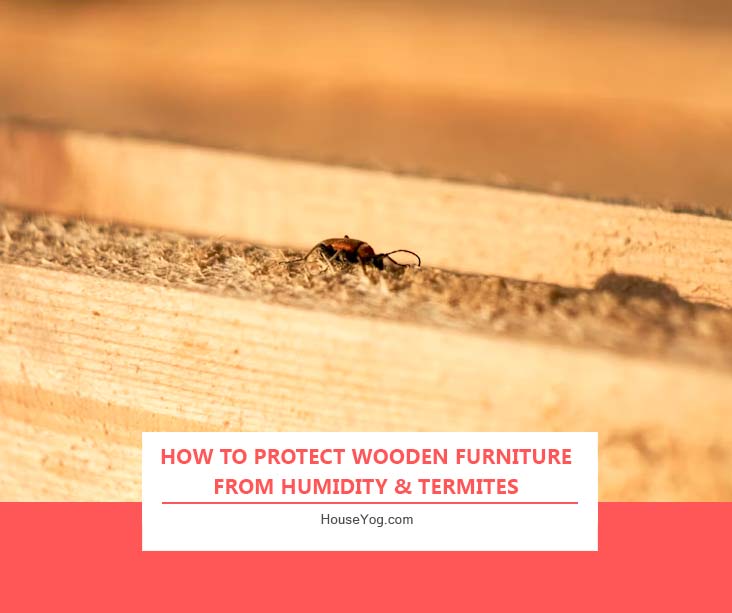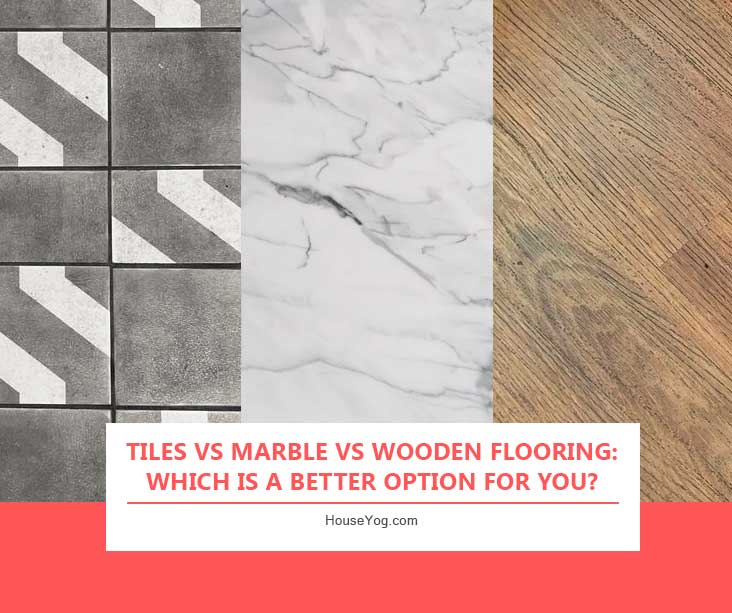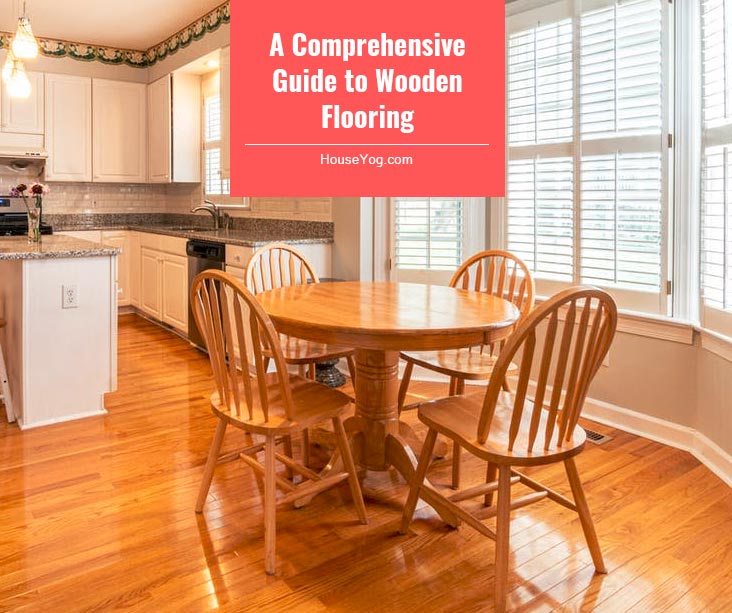Wooden furniture adds warmth, character, and timeless charm to any Indian home. However, India’s humid climate – especially during the monsoon season – can quickly turn beautiful furniture into a maintenance headache. Excess moisture leads to swelling, warping, fungus growth, and even termite infestations that can silently damage your valuable pieces.
If you’ve been wondering how to protect wooden furniture from humidity, termites, and other pests, this guide has you covered.
We’ll walk you through practical, affordable, and expert-backed solutions to safeguard your wooden furniture in Indian weather. From humidity-proof finishes and natural termite repellents to maintenance routines and cost-guidance and affordable preventive treatments, here’s everything you need to know to keep your furniture strong, durable, and beautiful for years..
Why Humidity & Termites Pose a Serious Threat to Wooden Furniture
Wood is a hygroscopic material – it naturally absorbs and releases moisture depending on the air’s humidity level. This makes wooden furniture particularly sensitive to India’s humid weather, especially during the monsoon months.
Here’s what happens when the relative humidity (RH) in your home rises above 60%:
- Wood swells, warps, or bends, leading to misaligned doors, drawers, and joints.
- Moisture encourages mold and fungal growth, which discolours and weakens the surface.
- Termites and wood-boring insects thrive in damp, dark environments and feed on cellulose inside the wood.
Over time, this combination of humidity and termite infestation can seriously damage your furniture’s structural integrity, polish, and veneer – sometimes beyond repair.
That’s why protecting wood furniture in humid climates isn’t just about appearance – it’s about preserving durability and value.
In the next section, let’s explore practical ways to prevent humidity and termite damage before it starts.
Choose the Right Wood & Treatment from the Start
The best protection against humidity and termites begins before the furniture even enters your home. The type of wood and surface treatment you choose can make all the difference between decades of durability and costly repairs.
1. Use Termite-Resistant Wood and the Right Grade
Some woods are naturally more durable and termite-resistant.
- Opt for hardwoods like teak, neem, or rosewood – they have natural oils that deter insects.
- In moisture-prone areas like kitchens or bathrooms, use BWR (Boiling Water Resistant) or BWP (Boiling Water Proof) plywood to withstand humidity and spills.
2. Pre-Treat with Anti-Termite and Preservative Solutions
Before polishing or painting, apply borate-based preservatives, anti-termite coatings, or wood sealants.
- Allow them to dry completely before finishing.
- Seal with a protective topcoat or varnish to lock in the treatment and repel moisture.
3. Invest in Quality Veneers, Adhesives, and Finishes
Low-grade glues and finishes can trap moisture, leading to early damage.
- Choose moisture-resistant adhesives and resins for lamination and joinery.
- Use polyurethane (PU) or melamine varnish for lasting shine and resistance to humidity.
Why It Matters:
The right wood type and treatment act as your first defence against both termites and humid conditions. Investing upfront ensures your furniture stays sturdy, glossy, and low-maintenance – without the need for expensive retrofits later.
Humidity Control & Environmental Care for Wooden Furniture
Even the best-treated wood furniture can suffer if your indoor environment is unstable. In India’s humid and seasonal climate, maintaining the right balance of moisture and air circulation is key to preventing swelling, cracking, or termite growth.
1. Maintain Optimal Indoor Humidity
Wood reacts strongly to the air’s moisture level.
- Keep indoor relative humidity (RH) between 45% and 55% – above 60% causes swelling, while below 40% can make wood shrink or crack.
- Use a dehumidifier or air conditioner during the monsoon months.
- In dry or winter seasons, use a humidifier occasionally to prevent brittleness.
2. Improve Ventilation and Airflow
Still air and trapped moisture are major causes of fungus and odour.
- Avoid placing wooden furniture in closed, damp corners or against exterior walls.
- Keep windows slightly open or use exhaust fans for better air movement.
- During the monsoon, run ceiling fans regularly to prevent moisture buildup.
3. Prevent Direct Water Contact
Even small amounts of water can seep into wood pores and cause lasting damage.
- Avoid contact with wet floors or leaking walls – use base rails or stands to raise furniture slightly.
- Wipe spills immediately and don’t use wet cloths for cleaning.
- For high-risk areas (kitchens, balconies), use laminated or sealed finishes.
4. Manage Temperature Changes
Wood expands and contracts with temperature shifts.
- Don’t place furniture directly near heaters, radiators, or strong sunlight.
- Use curtains, blinds, or UV-protective films on windows to reduce heat exposure.
- Maintain a stable indoor temperature to minimise wood movement.
Why It Matters:
Consistent humidity and temperature control help your wood furniture last longer, retain its shape, and stay termite-free. These small environmental adjustments prevent costly repairs and protect your furniture’s natural beauty year-round.
Regular Maintenance & Inspection for Wooden Furniture
Even the best-treated wood furniture needs regular upkeep to stay durable and termite-free. In India’s humid and tropical conditions, routine care is your best defence against hidden damage.
1. Dust, Clean & Polish Regularly
- Dust weekly using a dry microfiber cloth – avoid wet cleaning or harsh chemical sprays.
- Apply wood polish, wax, or linseed oil every few months to restore sheen and strengthen the surface.
- In monsoon months, lightly polish more often to form a protective moisture barrier.
Pro tip: Use silicone-free polishes for a natural finish and better breathability.
2. Inspect Key Areas Frequently
- Check bottom edges, back panels, joints, and corners for early signs of swelling or termite tunnels.
- Tap the wood lightly – a hollow sound may indicate internal termite damage.
- Look for fine sawdust (frass) near furniture legs or walls – it’s a clear sign of termite activity.
3. Reapply Protective Coatings
- Protective coatings like varnish, lacquer, or polyurethane sealant lose effectiveness over time.
- Recoat surfaces every 2–5 years, depending on usage and exposure.
- For outdoor or semi-exposed furniture, choose UV- and moisture-resistant finishes.
Why It Matters:
Consistent inspection and polishing not only keep your wooden furniture looking rich and glossy but also prevent deep moisture absorption and termite infestation – saving you from expensive repairs later.
Termite Prevention & Control for Wooden Furniture
Even with good maintenance, termites can still find their way in – especially during humid months. Here are simple and effective ways to prevent termite infestation and control early signs before they spread.
1. Sunlight Exposure
- Place wooden furniture in direct sunlight for 2–3 days once or twice a year.
- Sunlight helps kill termites and dry out hidden moisture, which termites need to survive.
Pro Tip: Rotate or reposition large furniture to ensure all sides get sun exposure.
2. Use Natural Oils & Repellents
- Orange oil (rich in limonene): Drill small holes and inject the oil – it kills termites on contact.
- Neem oil or olive-oil + vinegar mix: Apply on wood surfaces to repel termites naturally.
- These methods are eco-friendly and ideal for mild or preventive treatments.
3. Borax / Boric Acid Application
- Mix borax powder in warm water and spray near joints, corners, or areas showing termite activity.
- It disrupts termite digestion and eliminates colonies over time.
- Repeat every few weeks during high-risk seasons (monsoon, post-rain).
4. Physical & Chemical Barriers
- Seal wall cracks, floor joints, and furniture gaps where termites can enter.
- Apply anti-termite paste or insecticide on hidden surfaces, base panels, or cavities.
- For homes in termite-prone areas, use termite-trap systems or perimeter chemical barriers as long-term protection.
5. Professional Pest Inspections
- Get a licensed pest control inspection once a year, especially before or after the monsoon.
- If you notice mud tubes, hollow-sounding wood, or discarded wings, call professionals immediately.
Tentative Cost:
- Natural DIY methods: ₹200–₹1,000 (depending on area and materials).
- Professional termite treatment: ₹3,000–₹10,000+ for full-home service in major Indian cities.
Why It Matters:
Termites work silently – early detection and preventive care can save thousands in furniture restoration or replacement costs.
Seasonal Checklist for Wooden Furniture Protection
Wood reacts differently across seasons – humidity, heat, and moisture all affect its shape and strength. Following a simple seasonal maintenance routine can help keep your furniture durable, termite-free, and beautiful year-round.
| Season / Time | What to Do | Why / Benefit |
| Pre-Monsoon | Dehumidify rooms, seal wall or floor cracks, and polish wooden surfaces. | Minimises moisture absorption and preps wood for high humidity. |
| Monsoon | Maintain ventilation, avoid placing furniture in wet zones, and inspect for damp patches. | Prevents mold growth, swelling, and termite activity. |
| Post-Monsoon | Wipe down all surfaces, reapply sealant or wood polish, and inspect corners or joints. | Restores the protective barrier after prolonged moisture exposure. |
| Summer / Heat | Maintain stable indoor humidity (use coolers/humidifiers) and avoid direct sunlight. | Prevents cracking, fading, and shrinkage caused by heat. |
Pro Tip: Add this checklist to your home maintenance calendar – a quick 15-minute inspection each season can save you from major repairs later.
Cost Considerations & When to Seek Expert Help
For most homeowners, protecting wooden furniture from humidity and termites is affordable and manageable with regular upkeep. However, knowing when to handle things yourself and when to call in experts can make all the difference.
Approximate Cost Breakdown in India:
| Type of Care / Service | Estimated Cost Range | Notes |
| DIY maintenance (polish, oil, or wax) | ₹100–₹500 per furniture piece | Ideal for routine upkeep every 3–6 months. |
| Localised termite treatment (spot repair) | ₹500–₹2,000 per affected item | Suitable for early-stage or small infestations. |
| Professional termite or structural treatment | ₹3,000–₹10,000+ | Varies by city, infestation scale, and treatment type. |
If you notice hollow sounds, sagging joints, or visible termite holes, it’s best to seek professional pest control or restoration services immediately.
For heirloom or high-value pieces, expert restoration ensures the wood’s integrity and finish remain intact for decades.
Pro Tip: Regular preventive care is far cheaper than repairing or replacing damaged wood. If in doubt, get a professional inspection, especially before or after the monsoon season.
FAQs on Protecting Wooden Furniture from Humidity & Termites
Keep indoor humidity between 45–55%, use a dehumidifier or air conditioning during the monsoon, and ensure good ventilation. Apply moisture-resistant varnish or polish every 2–3 years to seal wood surfaces and prevent swelling or warping.
Use termite-resistant wood like teak or neem and treat furniture with borate or anti-termite chemicals before polishing. Keep furniture away from damp walls or floors and schedule annual pest inspections before the rainy season.
Yes. In humid climates, wood absorbs moisture, which causes swelling, warping, or joint loosening. When humidity drops suddenly, it can shrink and develop surface cracks. That’s why consistent indoor humidity is crucial for long-term wood care.
Common signs include tiny holes, powdery wood dust, mud tunnels, or a hollow sound when you tap the surface. You might also spot discarded termite wings near corners or wooden joints. Early detection helps prevent major structural damage.
Yes. Neem oil, orange oil, and borax solution work well as natural termite repellents. Apply them to wooden surfaces or joints every few months. These are safe, affordable, and effective for mild infestations or preventive care.
Re-polish or re-seal your furniture every 2–3 years, or sooner if it’s exposed to humidity or sunlight. This maintains the protective layer and prevents moisture from entering the wood grain.
Professional termite treatment costs ₹3,000 to ₹10,000 for a typical home, depending on infestation level and city. Preventive anti-termite coating for new furniture usually costs around ₹20–₹40 per sq. ft and is highly recommended.
Inspect all wooden furniture twice a year – before and after the monsoon. Look for damp patches, soft spots, or sawdust near furniture legs and corners. Regular checks help catch humidity or pest issues before they spread.
Final Takeaway
Protecting wooden furniture in India requires both humidity control and termite prevention. With smart material choices, environmental management, and routine maintenance, you can significantly extend the life and beauty of your wood pieces.
If you’re planning new furniture, renovation, or home design, reach out to Houseyog’s expert team. We can guide you on material selection, finishing techniques, and environment planning to create a home that’s stylish, durable, and future-proof.






